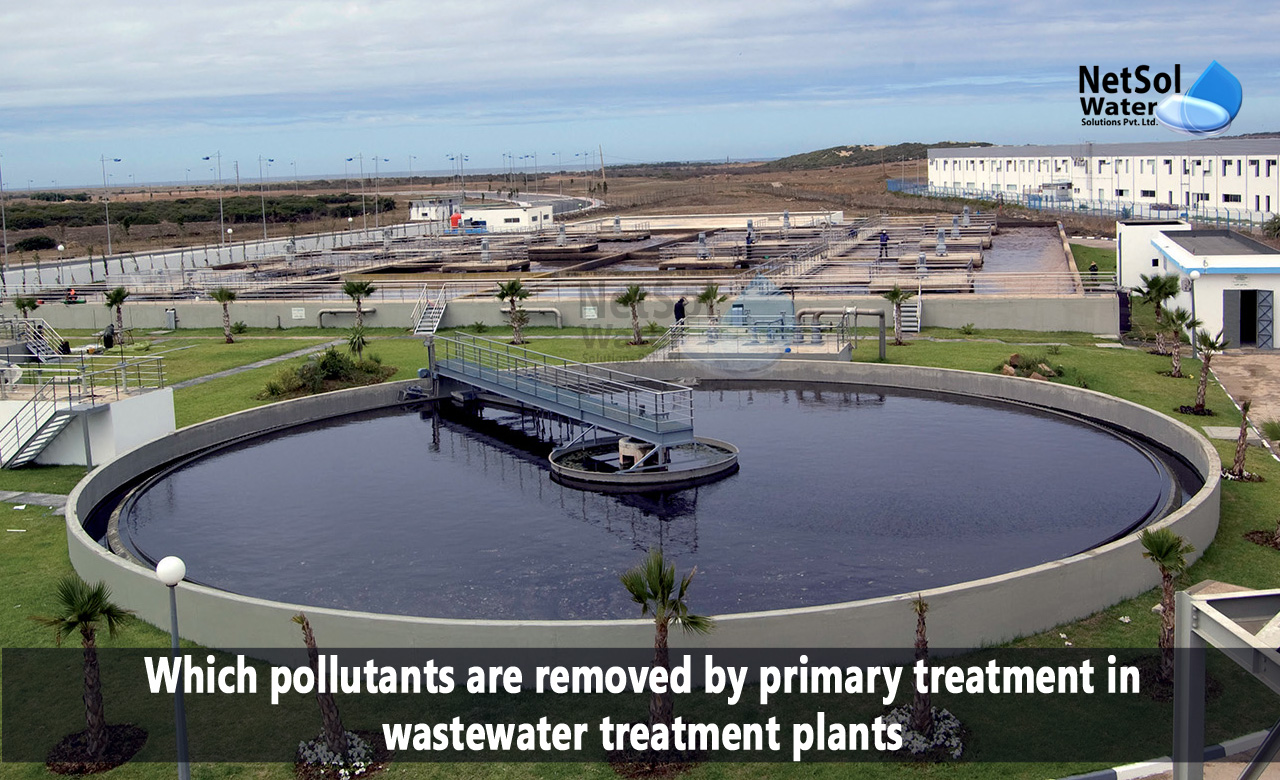The initial course of action in wastewater treatment plants is sedimentation, which is a straightforward process for eliminating suspended organic particles. Sometimes chemicals are used to remove colloidal and finely divided particles. As, we know lot about the primary treatment of wastewater, let’s discuss which pollutants are removed using primary treatment in wastewater treatment plants.
Objectives of primary treatment
The following are the main objectives of primary wastewater treatment:
1. To reduce wastewater's strength by 30 to 50 percent.
2. To cut the amount of settling solids by 80% to 90%.
3. To reduce BOD by 30 to 35%.
4. To get the wastewater ready for further processing.
Primary sedimentation tank
Behind the grit chamber is the primary sedimentation tank, also called the clarification tank. It can be shaped like a square, circle, or rectangle. The fundamental concept and specifics of construction are the same, as for a typical sedimentation tank in water treatment plants.
Which pollutants are removed by primary treatment in wastewater treatment plants?
Particulates that will either float or naturally settle out by gravity are removed, as part of the first treatment. Physical processes include screening, comminution, grit removal, and sedimentation.
Screens: Long, narrow metal bars that are closely spaced together make up screens. They stop bulky items like wood, rags, and other floating garbage, from blocking pumps or pipes. In modern facilities, the screens are mechanically cleaned, and trash is instantly disposed of by being buried on the facility grounds.
Comminutor: Materials that pass through the screens may be ground and shredded in a comminutor. The shredded particles are afterwards eliminated, during sedimentation or flotation processes.
Grit chambers: These are deep, slender vessels designed to stop the flow of water, allowing sand, coffee grounds, and eggshells to settle, to the bottom. Grit causes additional wear and tear on pumps and other industrial equipment. In areas with combined sewer systems, which move a sizable amount of silt, sand, and gravel washed off roads or other property during a storm, its disposal is extremely important.
Sedimentation tanks: Wastewater that has been processed through filters and grit chambers is extracted, from the water by sedimentation tanks. These tanks, commonly referred to as primary clarifiers, provide gravity settling with around two hours of detention time. As the wastewater gradually flows through the sediments, they finally sink to the bottom.
The settled solids, often referred to as raw or primary sludge, are moved down the tank bottom by mechanical scrapers. A hopper holds the sludge, which is then pushed out for disposal. Oil and other floating impurities are eliminated, by mechanical devices that skim the surface.
What do we offer?
Netsol Water is one of India's top producers of water treatment plants, wastewater treatment plants, sewage treatment systems, effluent treatment plants, etc. Based on our many years of experience, we are the top service provider for waste and waste water solutions, including treatments, testing and monitoring, analysis, and suggested remedial actions.
We combine cutting-edge technology with our years of experience, to handle the most challenging water treatment or wastewater treatment requirements, of a wide range of clients including small enterprises, corporations, regional government agencies, industries, municipalities, etc.
For further information or to make a product purchase, please contact us at +91-9650608473 or enquiry@netsolwater.com



